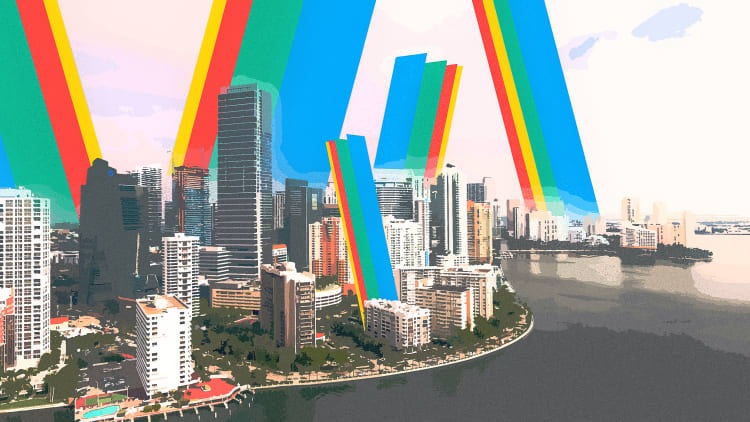- | 9:00 am
How Google’s new AI tool helps cities deal with extreme heat
Fourteen cities are piloting a new tool that helps calculate how much planting trees and adding ‘cool roofs’ can reduce urban temperatures.

On a hot day in Miami, some neighborhoods can be as much as 12 degrees warmer because of what’s called the “urban heat island effect”—the fact that roads, parking lots, buildings, and other infrastructure absorb and release extra heat compared to the natural landscapes of rural areas.
As climate change makes extreme heat more common, Miami is using a new tool from Google to help it calculate how much tree planting and adding “cool roofs”—designed with materials that reflect heat—could help lower future temperatures.
The Heat Resilience tool, currently being piloted in 14 cities, uses AI on satellite and aerial images to identify how much shade from trees exists in each neighborhood, as well as the presence of reflective roofs. It also uses machine learning to model how the trees and roofs affect local temperatures. With the tweak of a button, city officials can see how much of a difference it could make to add more of the interventions.
Cities and counties can use the tool to say, “Okay, if we increase our tree cover from 8% to 20%, what’s the impact on the surrounding temperature?” says Jane Gilbert, chief heat officer at Miami-Dade County. “That has a huge value to us in terms of being able to talk to decision-makers about both funding decisions and prioritization.”
Google released a previous version of the tool in 2023, which also showed current tree cover, and cities such as Austin have used it to prioritize the neighborhoods that most need more trees. Another app, the Tree Equity Score from American Forests also uses Google’s data. But the latest version of the Heat Resilience tool goes further by making it easy to estimate the effect of making changes. “The goal of our tool is really to help cities quantify how strategies can help them reduce urban temperatures in the local context,” says Mansi Kansal, a product manager at Google Research.
Adding a shade tree or a cool roof benefits both the neighborhood and its individuals. “If someone’s replacing their roof or building a new one, it doesn’t cost any more to install a cool roof,” Gilbert says. “The benefits to that property owner and the residents are significant.” The building can save on energy bills by using less air-conditioning. Because the roof reflects heat, and air conditioners are pumping less heat outside, the neighborhood will also be cooler.
Miami already requires cool roofs on new county-owned buildings and on affordable housing that gets financing from the local government. The county also successfully pushed for an amendment in the state building code that requires cool roofs on large buildings. Now, using the new tool, the county is considering new incentives for developers to encourage more adoption of the roofs and more tree planting.
Depending on the level of the intervention, the changes might lower temperatures by only a couple of degrees. But “2 degrees can make a huge difference in terms of AC load and in terms of health impacts,” says Gilbert. And as cities get hotter, it matters even more. As I spoke to Gilbert, the heat index in Miami was predicted to hit 105 degrees Fahrenheit—a milestone the city has hit more than 40 times this year so far.







































